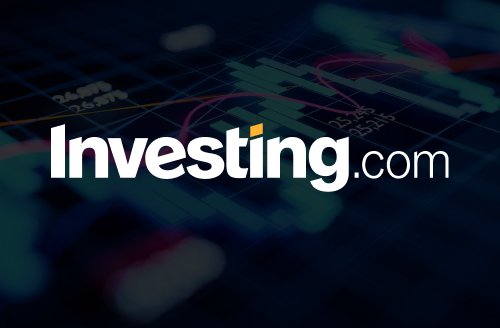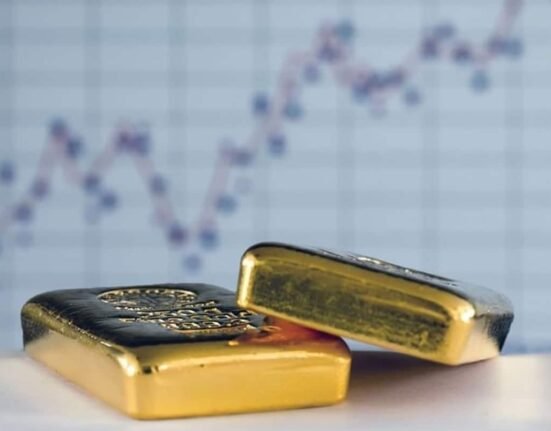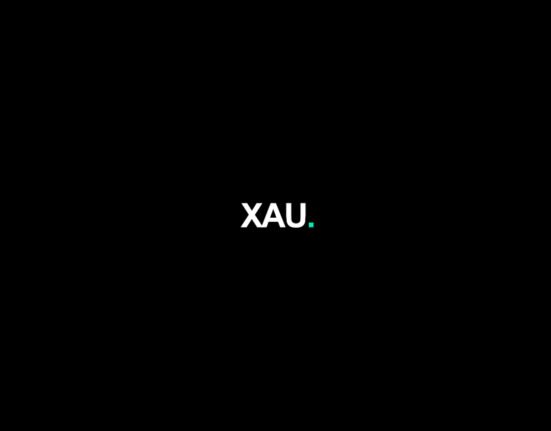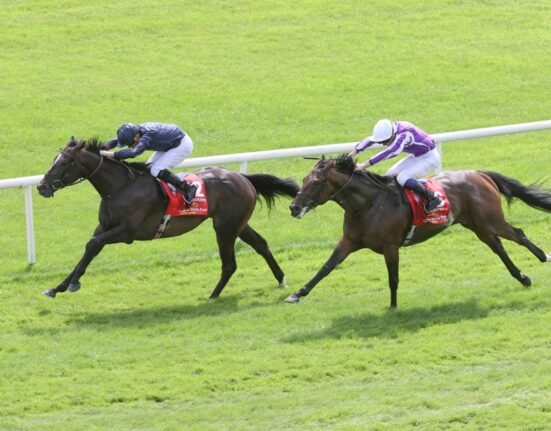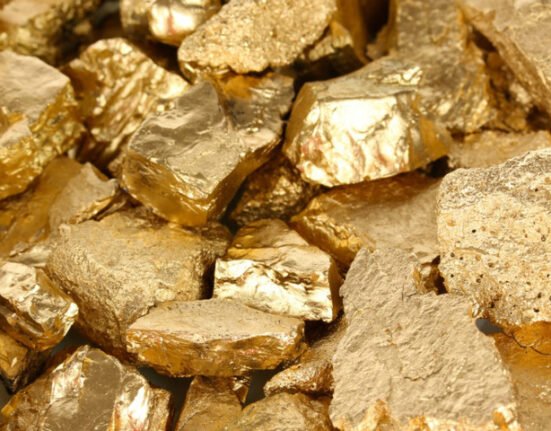Since reaching a record high above $3,500/oz in April, the rally has stalled, and is in need of a fresh catalyst to help push it higher
Gold Consolidates
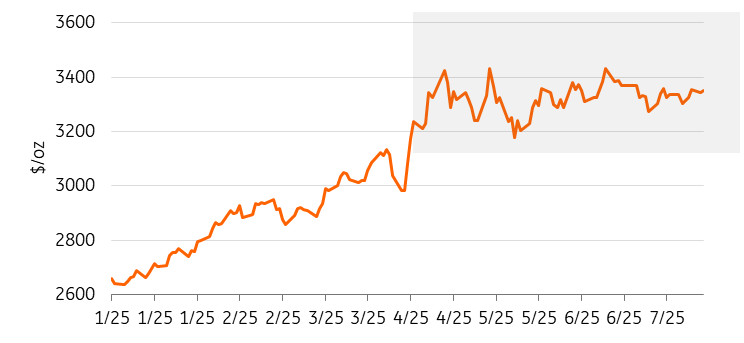
Source: Refinitiv, ING Research
But It’s Still Outperforming
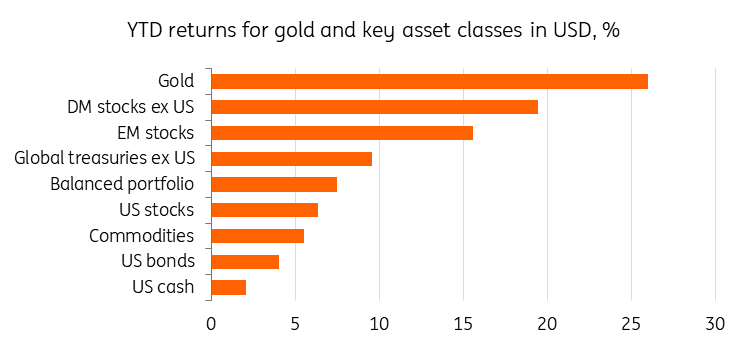
Source: WGC, ING Research
Since reaching that record high in April, gold has consolidated in a tight range. Still, prices are up around 28% so far this year, with the global trade war, geopolitical risks, and central bank buying the key drivers for the precious metal’s rally.
EFT Inflows Slow, Net Longs in Futures Fall
Meanwhile, ETF buying, which has been another key driver this year, has been slowing down in recent weeks, indicating cooling investor sentiment.
The first half of the year saw strong positive flows, marking the strongest semi-annual performance since the first half of 2020. Investor holdings in gold ETFs generally rise when gold prices rise, and vice versa. Still, with holdings below the 2020 peak, ETFs have room to add more.
Net Longs in Gold Futures Fall
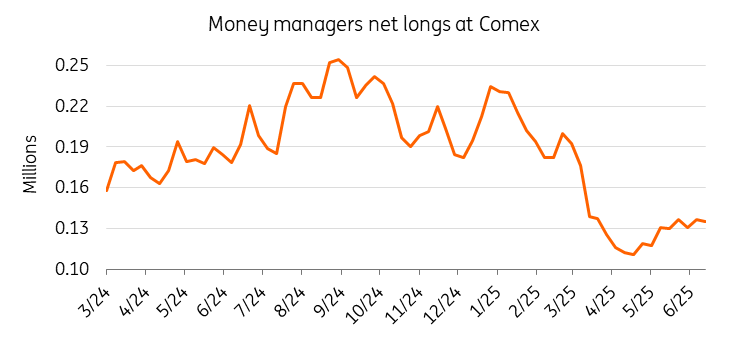
Source: CFTC, ING Research
Central Bank Buying Holds Up
Still, demand from central banks is holding up. Central banks have been buying every month through May this year.
Central banks added a net 20 tonnes to global gold reserves in May, an uptick from the previous month; however, it is still below the 12-month average of 27 tonnes, according to the latest data from the World Gold Council.
The National Bank of Kazakhstan led buying this month (7t), followed by Turkey and Poland, each with 6t net purchases. Meanwhile, the Monetary Authority of Singapore (MAS) reported sales of 5t over the same period.
China also added to its official gold reserves in June, for the eighth consecutive month. Gold held by the People’s Bank of China rose by 70,000 troy ounces last month. Its gold reserves have climbed by 1.1 million troy ounces (about 34.2 tonnes) since the current run of purchases began in November last year.
We believe central banks are likely to continue to add gold to their reserves given the still-uncertain economic environment and the drive to diversify away from the US dollar.
In the World Gold Council’s recently released Central Bank Gold Reserves Survey 2025, 43% of central bankers surveyed stated their own central bank would increase their gold reserves and 95% believed that official gold reserves would continue to increase in the next 12 months, citing gold’s attributes as a diversifier and hedge during crisis and inflation as key factors influencing their decision to hold gold.
The pace of annual purchases by central banks has doubled since the outbreak of the Russia-Ukraine war in 2022, from about 500 metric tonnes a year to more than 1,000.
Last year, central banks bought a combined 1,045 tonnes, accounting for about a fifth of overall demand. Poland, India, and Turkey were the largest buyers in 2024, according to the World Gold Council.
China Buys More Gold in May
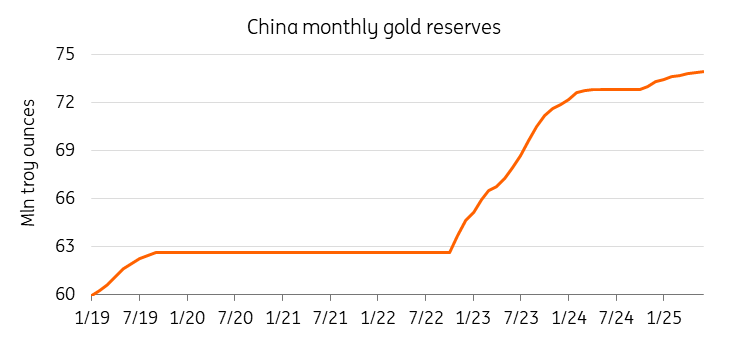
Source: The People’s Bank of China, ING Research
Bullish Drivers Are Still There
Still, the bullish drivers remain intact for gold, including central bank and safe-haven demand amid geopolitical and trade tensions. But with ETF demand cooling and net longs in declining, gold will need a fresh catalyst to lift it out of the current trading range.
For now, trade uncertainty remains as US President Trump recently unleashed new tariff threats, among them a 30% levy for the EU that will kick in on 1 August if the two sides fail to agree on a better deal. However, Trump indicated he is open to more trade talks, including with the EU.
With global trade risks likely to stay elevated, creating an uncertain market environment, safe-haven demand is likely to remain a support factor. And if we see trade talks deteriorating, this could push gold prices to a fresh record once again.
On the other hand, persistently high gold prices could suppress consumer demand and cap gold’s upside potential.
For now, gold is stuck in a range, in need of a fresh catalyst, and with trade and geopolitical tensions heating up again, it might not take much to reignite that rally.
Disclaimer: This publication has been prepared by ING solely for information purposes irrespective of a particular user’s means, financial situation or investment objectives. The information does not constitute investment recommendation, and nor is it investment, legal or tax advice or an offer or solicitation to purchase or sell any financial instrument. Read more

